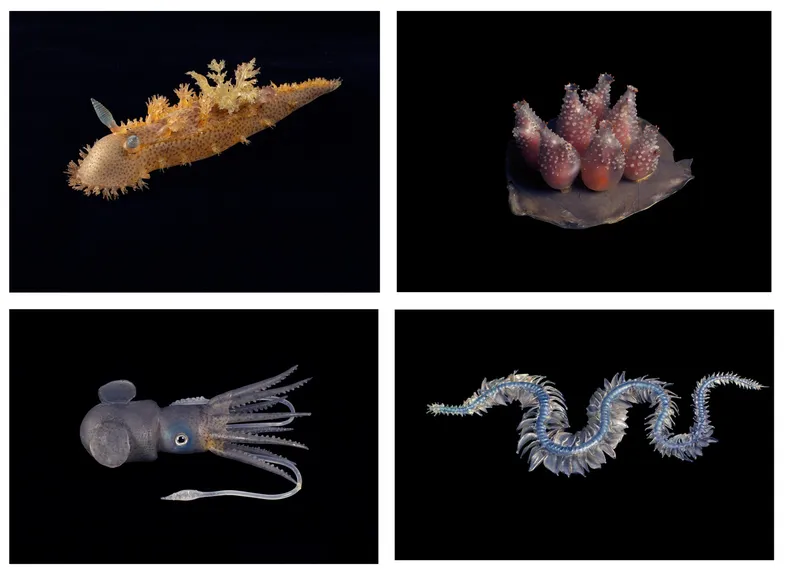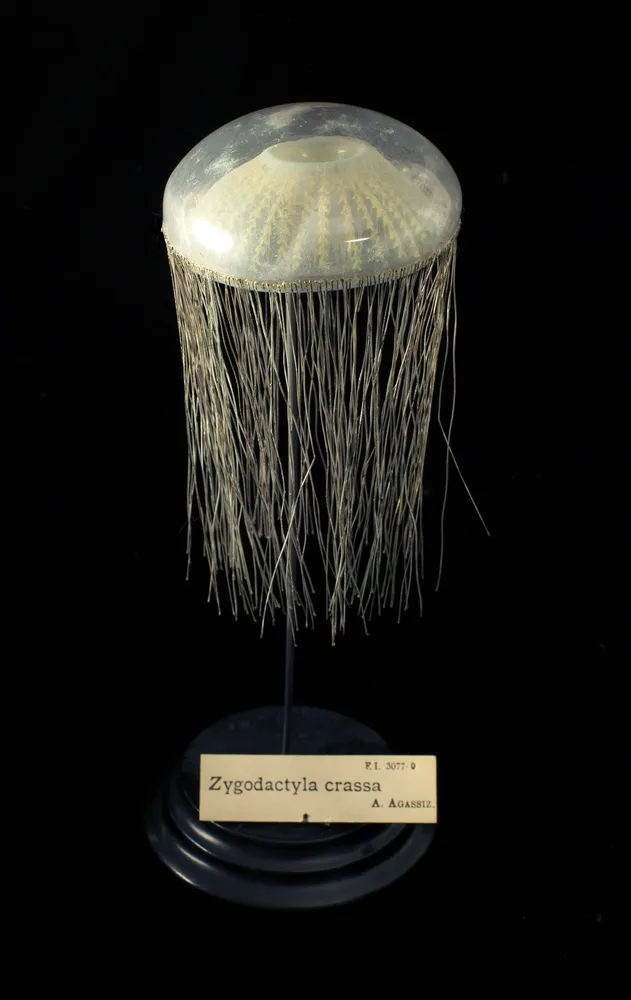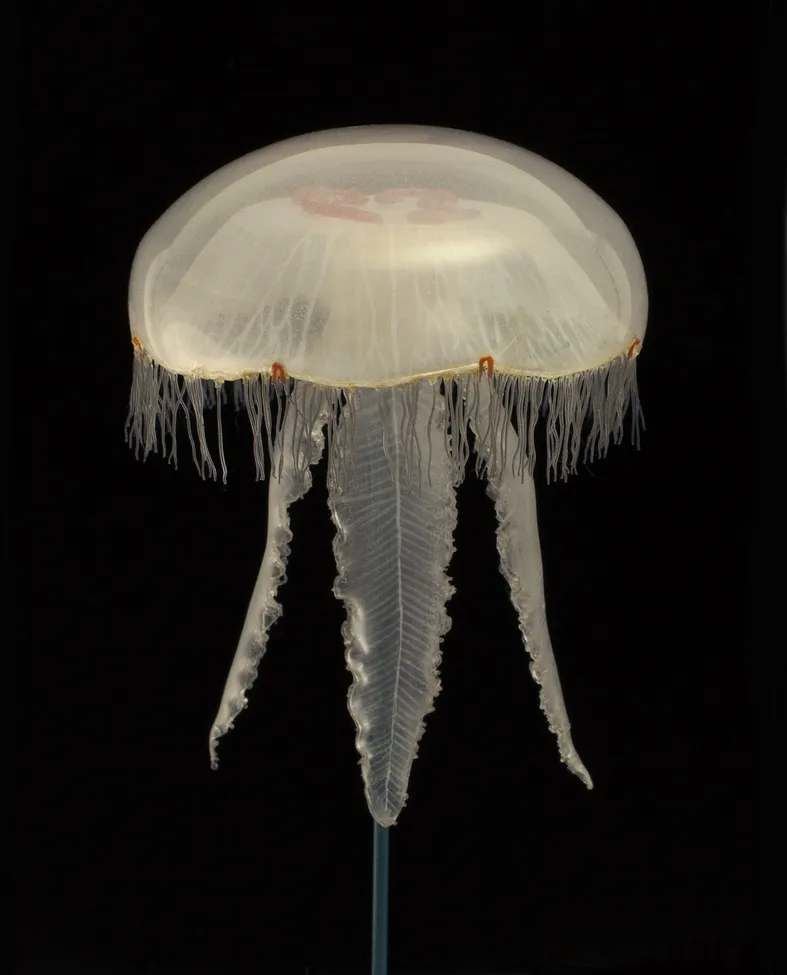Rebecca Le Grice, Curator Natural History, Canterbury Museum
Scientists and casual observers alike place a lot of value in being able to see an organism in its most life-like state. Preserving a part of the natural world in a way that captures this is sometimes not as easy as fixing a bony fish in formalin or pinning an insect. So, what do you do when a part of the natural world is difficult to preserve, or loses a critical part of its essence when taken from its habitat and stored in a museum collection?

Leopold Blaschka’s passion for natural history, practical skills in glassworking, and (in hindsight) the serendipitous becalming of a sailing ship he was travelling on allowing him time for observing and sketching marine life, resulted in a spectacular project which addressed this conundrum.
During the 19th Century in Dresden, Leopold and his son Rudolf crafted a glass-working method to create and accurately capture the forms of creatures from the natural world. Previously Leopold had worked in a family business producing ornaments, lab equipment and glass eyes. At the time, making natural history models was a hobby of Leopolds, though that changed when Prince Camille de Rohan commissioned him to create 100 glass model orchids for his private collection. From this he was able to move into the business of creating natural history specimens after the director of Dresden Natural History Museum saw the orchids, and realising the scientific value in Leopold’s works, commissioned 12 sea anemones, creatures that he had found impossible to preserve for display. Leopold’s artistic method proved particularly popular in detailing diaphanous creatures such as jellyfish which couldn’t be preserved correctly as preserving fluid stripped them of virtually all their natural colours. These works, crafted from glass, were not only excellent teaching and research tools but each was, and is, a piece of art. The hot topic of evolutionary theory at the time contributed to their worldwide popularity, as they enabled the visualisation of organisms for both scientists and the public in a new way. Scientists of the time provided the Blaschkas with descriptions and illustrations of different organisms to make, creating a truly collaborative process between science and art.
Canterbury Museum holds 133 extant Blaschka models, Aotearoa’s largest single collection, with the first order made by Julius von Haast arriving in 1883. Many of these species are from in the Northern Hemisphere, but some are found in New Zealand waters including the Portuguese man-of-war, better known here as the bluebottle. For more background, check out this story and article about the Canterbury Museum Blaschka models.
Each Blaschka model, when presented with information about the organism it depicts, offers the viewer greater insight into the organism and its behaviour. For example, it is rare to see a jellyfish in its natural habitat and when you find one on the beach, it is hard to image how that gelatinous blob might look when in its natural form, supported by the water. Below is a selection of three Blaschka ‘jellyfish’ models from Canterbury Museum’s collection, including the Portuguese man-of-war (not really a jellyfish), the many-ribbed jellyfish (also not a jellyfish), and the moon jellyfish (a true jellyfish).
Portugese Man of War

In the first shipment of Blaschka to Canterbury Museum, “The Portuguese man-of-war appears in its true colours, and like the other specimens, resembles nature so closely as to be deceptive” (Press, 27 October 1883).
Their name refers to their resemblance to a Portuguese sailing warship from the 18th Century.
Although related to true jellyfish, the Portuguese man-of-war are in fact not a single organism as they appear, but are a colonial organism made up of numerous individual organisms called zooids.
The top section of the man-of-war acts as both a flotation aid and sail. They move through the ocean using both the currents and wind to propel them. Amazingly, they are either left- or right- ‘handed’ when it comes to the curve of their sail. Their tentacles which hang in the water below can reach 10 metres in length and are great for catching small crustaceans and fish to eat.
This model is currently on display at Canterbury Museum at CoCA
Many Ribbed Jellyfish

This species was originally named Zygodactyla crassa and it is separated from its closest relatives by the presence of warty bumps running in radiating ridges on its bell, giving it the common name of the many-ribbed jellyfish. Its bell can reach up to 40cm in width and its other common names include the crystal jelly and water jelly.
Like the Portuguese man-of-war, it is not in fact a true jellyfish but a relative of them. Its body is also made up of many individual colonial organisms.
The pale-yellow colour seen in the Blaschka model here is a true representation of their scientific description and comes from their gonads (reproductive organs) although this colour can vary by sex.
Moon Jellyfish

It is easy to see how the moon jellyfish got its name when looking at this model. Their outer bell can reach up to 45cm in width.
Their bodies are mostly white or colourless, but any colour they do have comes from their crescent-shaped gonads (reproductive organs) located at the top of their bell. You can see this Blaschka moon jellyfish has been given red-pink coloured gonads.
Their fine short tentacles hanging like a skirt around the edge of their bell sting and paralyse their prey which are then moved up to their moth using their much larger frilly tentacles.
Moon jellies can form ‘jellyfish blooms’ where immense numbers are found in an area of ocean. These are thought to have become more common recently in part due to some of their main predators being endangered, including turtles and sharks.
Incredibly, it has been discovered that these jellyfish can reverse-age, returning to earlier life cycle stages.
At the time of the first Museum Blaschka models going on display they were called ‘examples of industrial art as applied to science’ in the newspaper (Press, 27 October 1883). Today, the term ‘SciArt’ (Science Art) comes to mind when thinking about these models as they are clearly a representation of science using artistic or creative methods. Today SciArt, provides a workspace for scientists and artists to draw on both these skills and/or collaborate to better understand the world around us. For example, San Francisco based artist Courtney Mattison, in a way similar to the Blaschkas, crafts detailed and beautiful marine creatures in ceramics, rather than glass, to accurately show the true nature of different organisms. These works are also designed to be a teaching tool, in this case the pieces show human-induced damage to the marine ecosystem, drawing attention to an issue which most people do not get to see in real life below the ocean surface. Although Canterbury Museum’s Blascka are not being used for scientific research today, they remain important for science communication, and who knows what future research applications they might have in the future.
Featured organisations
-

Organisation | Whare taonga
Canterbury Museum